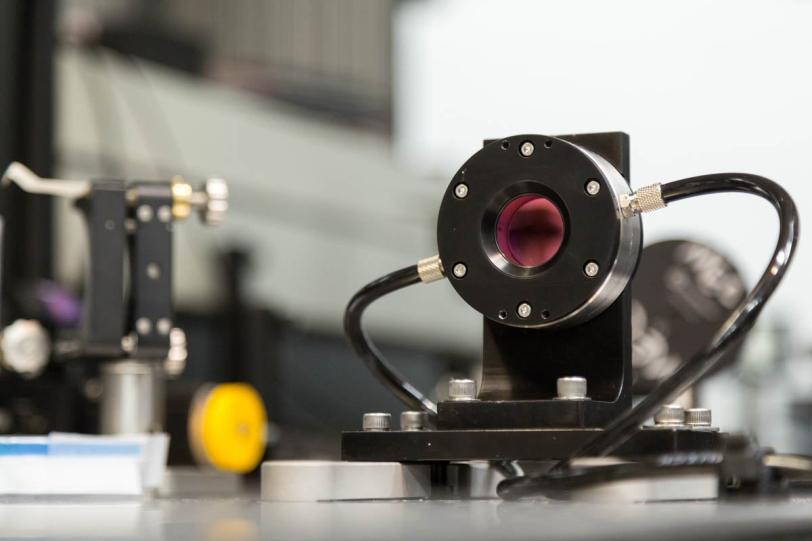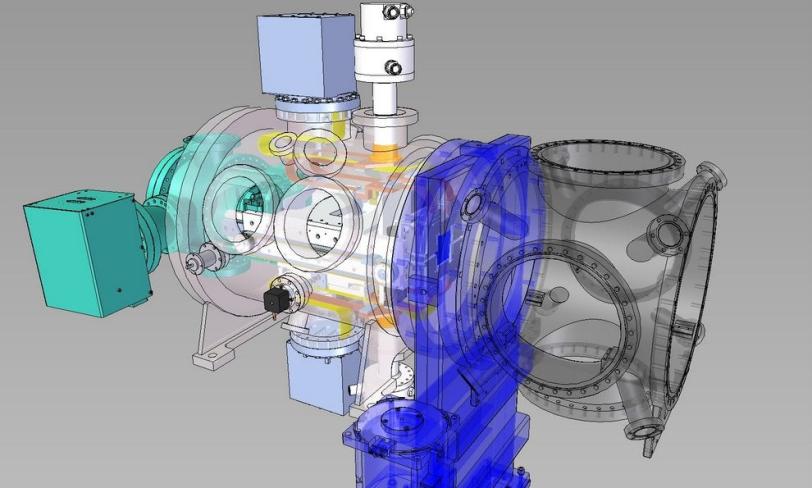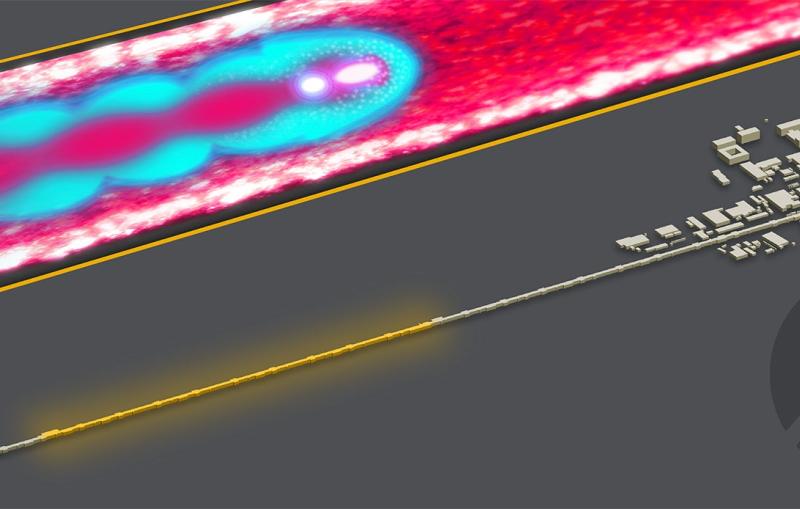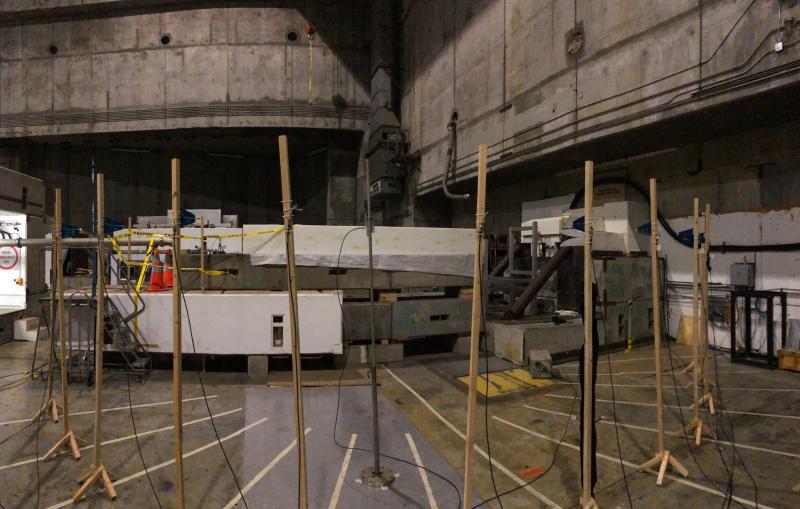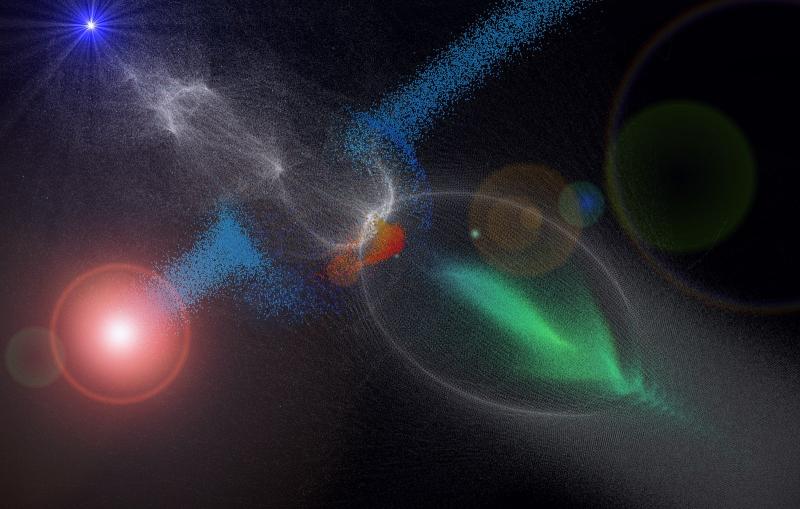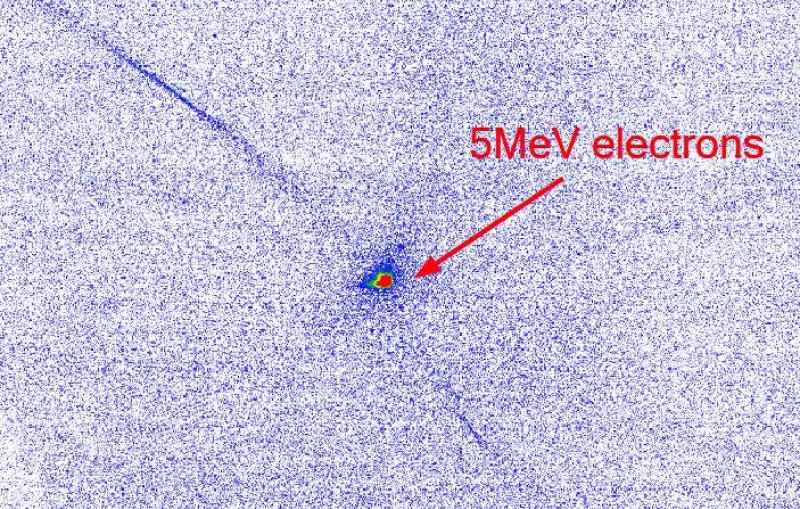LCLS Gets New Equipment, Upgrades During Downtime
Crews will install a powerful new instrument, start assembling a new "self-seeding" system that will focus soft X-ray laser pulses into a bright, narrow band of colors, and upgrade several laser systems during two months of routine downtime at SLAC's Linac Coherent Light Source (LCLS) X-ray laser.
By Glenn Roberts Jr.
Crews will install a powerful new instrument, start assembling a new "self-seeding" system that will focus soft X-ray laser pulses into a bright, narrow band of colors, and upgrade several laser systems during two months of routine downtime at SLAC's Linac Coherent Light Source (LCLS) X-ray laser.
The new instrument, known as LAMP, will simultaneously measure photons, electrons and ions in LCLS experiments. LAMP includes:
- An ultrasensitive "pnCCD" detector for counting individual light particles and collecting scattering patterns from nanometer-sized samples
- Two high-resolution-imaging spectrometers to record electrons and ions resulting from the interaction of LCLS X-rays with matter
LAMP replaces an instrument called CAMP that was central to early experiments at LCLS. LAMP improves upon some CAMP capabilities, offering more versatility with experiments that require other laser systems, better coupling to those laser systems, and a simpler arrangement for changing experimental configurations, as examples.
LAMP was built and paid for through a collaboration between SLAC's LCLS and Western Michigan University, with funding from a Department of Energy grant to WMU and support from the Max Planck Advanced Study Group in Hamburg, Germany.
A separate project, the new "soft X-ray self-seeding" (SXRSS) system, is designed to produce X-ray laser pulses of higher brightness in a much narrower band of wavelengths, or colors. A similar system for "hard," or higher-energy, X-rays was installed and commissioned last year; both are considered major improvements that will give researchers more control in studying and manipulating matter at the atomic level and deliver sharper images of materials, molecules and chemical reactions. The setup for this system replaces one segment of the magnetic undulator where electron bunches from SLAC's linear accelerator emit X-rays for the LCLS.
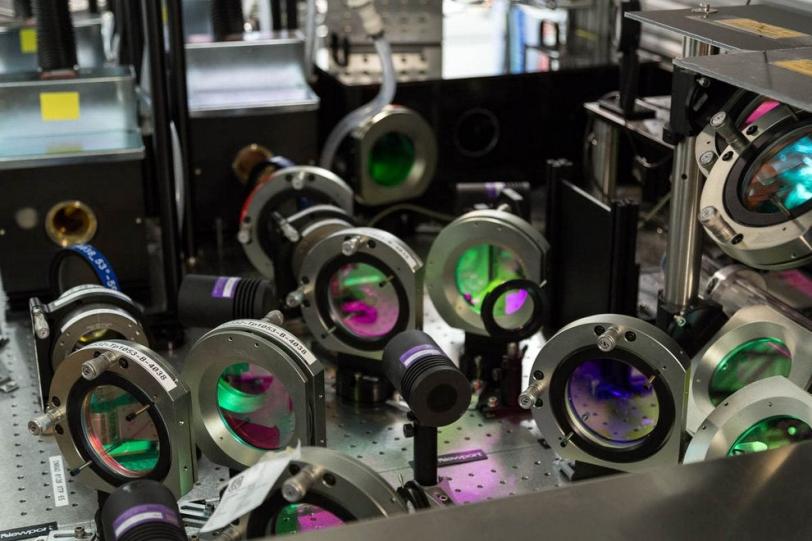
Other upgrades:
- A short-pulse laser that is used to create superhot plasmas and other exotic states of matter at LCLS is getting a high-power boost that will increase its peak power from about 4 terawatts to about 30 terawatts. An additional upgrade to 200 terawatts planned by 2015 would push it toward the ranks of the highest-power lasers in the nation. A terawatt is 1 trillion watts, enough to power 10 billion 100-watt light bulbs. Eduardo Granados, a laser scientist working on the short-pulse laser upgrade, said many components for that system were custom-built, including the device designed to "clean" and shape the pulses for improved performance. The first phase of the upgrade should be complete by year-end.
- A new LCLS "injector" laser, used to initiate the electron bunches that travel through a section of SLAC's linear accelerator and later emit X-ray light, will be installed alongside the primary injector laser for LCLS, replacing an older backup system. Used together, these two laser systems can produce two separate electron bunches at once; scientists will study ways to feed those bunches to separate X-ray laser lines, as is planned in LCLS upgrades.
- A 10-terawatt high-power laser system, installed along the linac to drive plasma wakefield acceleration experiments at the Facility for Advanced Accelerator Experimental Tests (FACET), will be outfitted with new equipment that will expand its uses for other types of research, such as the creation and study of superhot dense matter. Additional upgrades planned during this calendar year could increase this laser's peak power to 15-20 terawatts. Alan Fry, deputy director of SLAC's Laser Science and Technology Division, said, "We wanted this laser available to our laser scientists and other scientists at SLAC to be able to use during FACET's downtime." Fry added, "The LCLS injector laser that is being replaced will be used for other laser research, including experiments that are complementary to the offline research planned with the FACET laser."
Also during this period, about a dozen SLAC interns are engaged in a variety of science- and office-related projects supporting the laser division and LCLS, said Fry, who manages the interns. "We had an explosion of interest,” he said. All of the interns are undergraduate students pursuing technical degrees. The interns arrived in late June and early July and will wrap up their work by early September.
"We are grooming potential future employees and potential future Stanford graduate students," Fry said.
For questions or comments, contact the SLAC Office of Communications at communications@slac.stanford.edu.
